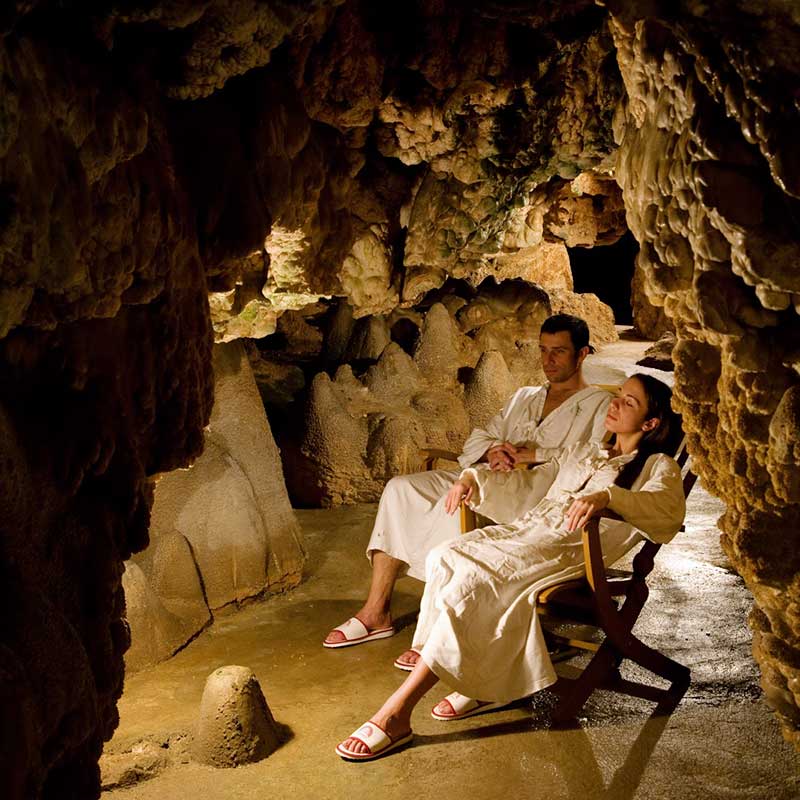To rediscover yourself surrounded by spas, beauty and harmony
There is a place, in the heart of Tuscany, where time seems to have stood still, where pure water gushes out of deep springs, where underground lakes emerge in thousand-year old grottos, and where English-style gardens surround magnificent palazzi built in the Art Nouveau style.
Nestling in the gentle Tuscan hills, halfway between Florence and the Versilia coast, Valdinievole is an area to be discovered, rich in history, culture and traditions. Starting from Montecatini Terme or from Monsummano Terme – both famous for their thermal baths – you can go on a journey full of tiny hamlets, century-old parish churches, majestic villas and then let yourself be tempted by the wonders of a still totally genuine cooking.
Welcome to Valdinievole, a land of wellbeing, rest and care. Here, thousand-year old rituals blend together with treatments and innovative methods, studied to help you recover the natural harmony between body and soul. The thermal towns of Valdinievole are waiting for you to take a break from your daily routine, or a weekend as a couple or a holiday with your family, in order to enjoy the beneficial effects of waters, rich in mineral salts and other important elements.
To recover your physical form, to awaken your beauty, to reactivate the senses: these are the reasons why Valdinievole is an ideal place for a regenerating break, for a revitalizing experience, for a pause from routine and from daily tasks, just to think, with pleasure, only about yourself.
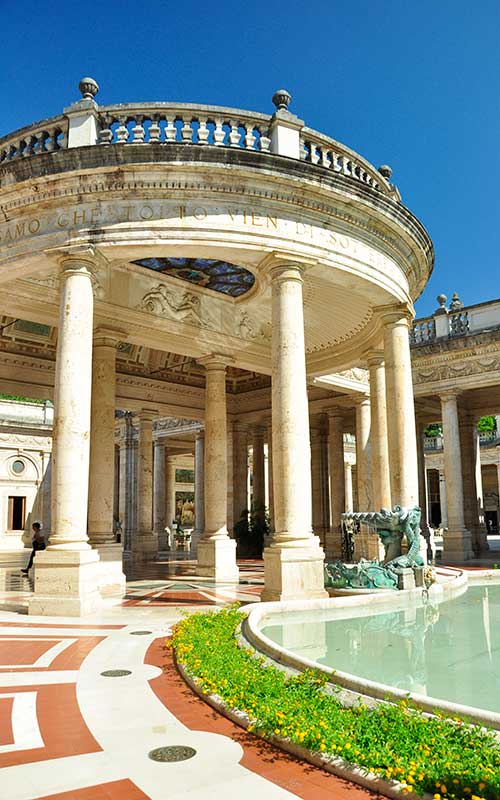 A town of waters, a garden city, a town of Art Nouveau: Montecatini Terme is a place chosen for its wellbeing and beauty, thanks to its thermal springs, to its luxuriant green gardens and to the wonderful works of art scattered around the area. An ideal atmosphere of relaxation and care in which to immerse yourself and to let yourself be spoilt and nurtured, enriched by the warm hospitality of its inhabitants and by so many exquisite delicacies which will satisfy both the palate and all the other senses. far from the stress of daily life.
A town of waters, a garden city, a town of Art Nouveau: Montecatini Terme is a place chosen for its wellbeing and beauty, thanks to its thermal springs, to its luxuriant green gardens and to the wonderful works of art scattered around the area. An ideal atmosphere of relaxation and care in which to immerse yourself and to let yourself be spoilt and nurtured, enriched by the warm hospitality of its inhabitants and by so many exquisite delicacies which will satisfy both the palate and all the other senses. far from the stress of daily life.
Leopoldina, Tettuccio, Regina and Rinfresco are the names of Montecatini’s four precious waters. By means of inhaled treatments, by drinking thermal water, balneotherapy and mud baths, the waters that pour out of these springs from 60-80 metres underground, are used for looking after various pathologies which have to do with the liver, kidney, bile, muscles, the osteo-articular apparatus, the respiratory system and the skin. Without forgetting arthritis, rheumatic pains and problems connected with stress. A cascade of wellbeing for the body and for the mind.
The history of the thermal town of Montecatini begins in the 15th century with Ugolino Simoni Caccini, “father of the waters”, who was the first person to theorise hydrotherapy as a medical cure. Ugolino spoke of a bath protected by a small roof: he was referring to the Tettuccio Spa, the “new bath” founded in 1370. This is a symbol of the town: it stands on the Via Verdi, the avenue of the thermal baths, and in its monumental complex, it holds works of many great artists, such as Galileo Chini, Sirio Tofanari, Ezio Giovannozzi, Basilio Cascella, to name but a few.
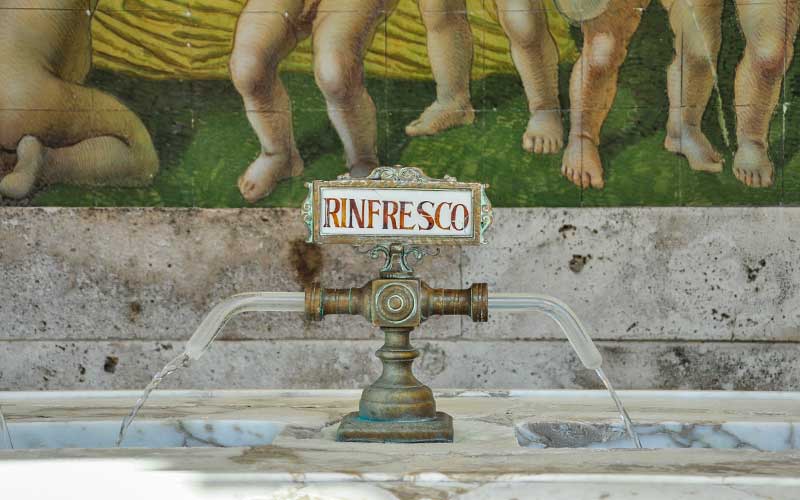
The Great Thermal cities of Europe
The Great Spas of Europe is a network of eleven thermal cities and is a candidate for the UNESCO List of World Heritage sites. Together with Montecatini Terme, the following towns make up this network: Baden bei Wien (Austria), Spa (Belgium), Karlovy Vary, Frantiskovy Lazné and Marianské Lazné (Bohemia – Czech Republic), Vichy (France), Bad Ems, Baden-Baden and Bad Kissingen (Germany), Bath (United Kingdom).
The luxurious building of the Terme Regina, built at the beginning of the 20th century, still amazes visitors, even to this day, as they pass into the entrance with its ‘Heron and Frog Fountain’, by Raffaele Romanelli. Near the buildings of the Town Hall, the Excelsior cinema and the Tamerici Pavilion lies the Excelsior Spa which offers avantgarde treatments which mix together the beneficial aspects of the waters and of the mud baths with relaxation techniques for the body and mind, as well as personalized, aesthetic treatments.
Known all over the world, Montecatini’s thermal mud baths (mud chosen by the pop star Madonna for her line of cosmetics) are one of the most important treatments of the Redi Spa: the most modern and well-equipped spa of the town.
The myorelaxant, analgesic, detoxicating and regenerating effects of the mud baths, combined with the action of massage and with the characteristics of the water which flows into the thermal swimming pool, all help to recover one’s psycho-physical harmony.
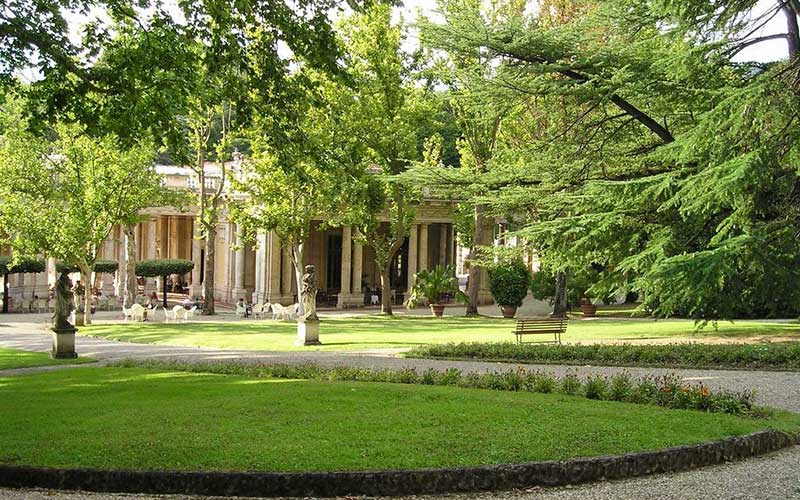
“La Pineta” – “The Pinewood” of Montecatini Terme
The thermal park of Montecatini Terme is known as “La Pineta” “The Pinewood” by local people and by affectionate tourists. It is the ideal place for relaxation, it has a circular track, 1500 metres long, signaled by indicative poles , every 500 metres, with medical, sports and wellbeing indications.
But wellbeing at Montecatini also means the outdoor life. The town’s thermal park is like an enormous green lung, a vast, flowering expanse of 420.000 square metres where the principal thermal spas have their homes, all widely spaced out. This green heart of the town is perfect in every season for an afternoon stroll, it is ideal for sports or to relax by reading a book on one of the town’s many benches. Children, too, find it a suitable place for having a good time out in the open air.
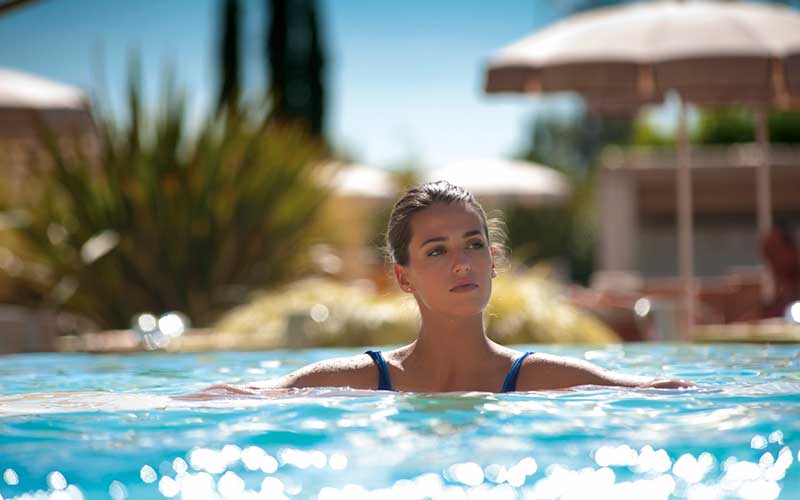
The Outdoor Spa
The Giusti Grotto’s outdoor swimming pool is 750 square metres large with hydromassage and a natural massage from the waterfall.
The bicarbonate – sulphate – calcic – magnesic water of the swimming pool is perfect for relaxing in, with its constant temperature of 34°C.
The wellbeing dream in Valdinievole continues in Monsummano Terme.
The Giusti Grotto takes its name from the thousand-year old grotto into which flow extraordinary waters; it is a thermal resort and a wellbeing centre, surrounded by a 45 hectare park, in an natural atmosphere of incomparable beauty.
The actual grotto is a marvel of nature in its own right: adorned with stalactites and stalagmites, it is divided into three areas – Paradise, Purgatory and Hell – with temperatures ranging from 28° to 34°C, while the area called Limbo is a crystalline mirror of water, constantly at 36°C all the year round. The spring’s waters also flow into the two swimming pools with hydromassage.
Apart from thermal treatment, the centre also offers aesthetic treatments and therapies aimed at recovering a good physical and mental balance.
